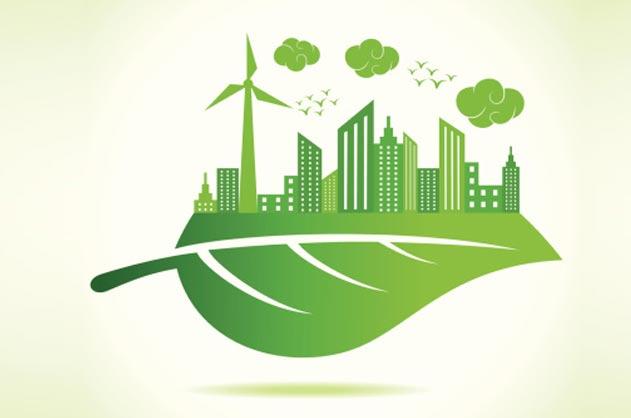This article is written by Ronika Tater, a student at the University of Petroleum and Energy Studies, School of Law. In this article, she discusses the adverse effect of climate change and how innovation through IP systems plays a crucial role to tackle the crisis and with the support of technology needed to transition to a green future.
Table of Contents
Introduction
Technology and innovation are the heart and soul of this world. Across the world, the efforts to shape a green future are felt and action to preserve the environment is growing. In 2020, we will realize the importance of the environment and the impact of climate change on their daily lives. Almost daily, the news of extreme climatic change across the world- floods, earthquakes, storms, forest burning, drought, and many other devastating events caused due to them.
One of the main challenges is to tackle the global climate crisis and for that, each of us is required to share the same goal to address it and build a sustainable future. As it is not an option but necessary for human survival. The only solution to tackle the climate change crisis is through technology. With the advent of technology, there is a need for a stable, more sustainably robust national innovation system and competent access to national Intellectual Property (IP) systems that sustain the development and assign technologies, products, and services needed to move towards a green future.
What are Intellectual Property (IP) rights
Intellectual Property rights play a pivotal role in encouraging innovation and creativity. The main purpose of IP rights is to protect the rights of the innovators and creators against infringement and give a fair reward to their work by recognition and to earn a living from it. Various rights are protected by various types of IP, as patents for invention, brands for trademarks and geographical indications, designs for industrial rights or design patents, creative and artistic works by copyright, and trade secrets for confidential business information. These rights prevent others from copying without the owner’s consent or permission. Hence, creates opportunities for the right holders to award by charging revenue for the use of their IP. The purpose of economic revenue encourages investment in research and development in developing innovations, creations, and for the economic growth and employment of the country thereby benefiting the environment.
The 2020 World Intellectual Property (WIPO) campaign puts innovation and the IP rights that supports it at the core to create a green future. While enabling companies to get a reward for their time, effort, energy, and funds put into eco-friendly outputs so that the inventor’s invention is secure against the exploitation of the third party. Hene, IP rights open the doors for the development of eco-friendly technologies, products, and services.
Green technology
The term green technology encompasses any kind of eco-friendly or clean technology by an evolving group of methods and materials, by technique for generating energy to non-toxic cleaning products and services. The prospect of green technology is below-mentioned:
- Sustainability– It promotes the use of natural resources in such a way without comprising for future generations.
- Cradle to cradle design– it means that using manufactured products by creating them reusable or fully reclaimed.
- Source reduction– using technology techniques for changing directions of production and consumption to reduce waste and pollution.
- Innovation– using technology as an alternative medium for natural resources that have been hazardous to health and the environment.
- Viability– creating a potential career by the implementation of economic activities, policies around technology that truly protect the planet.
The International Patent Classification Committee developed an “IPC Green Inventory” which alleviates searches for patent information relating to Environmentally Sound Technologies as mentioned by the United Nations Framework Convention on Climate Change. IPC Green Inventory includes the following categories of technology:
- Alternative Energy Production;
- Energy Conservation;
- Nuclear power generation;
- Transportation;
- Waste management;
- Agriculture forestry;
- Administrative, regulatory, and design aspects.
The motive for the adoption of green technologies is to tackle global warming caused due to the emission of greenhouse gases and conserve non-renewable energy, use all resources in a more sustainable manner, reuse and recycle waste and products, and hand the residual waste more agreeably than the technologies for which they were alternatives.
Green Intellectual Property
IP rights are the main sources for advance research and development of technology as they are a form of proprietary rights by transferring, registering, licensed and protected against infringement. Article 7 of the Agreement on Trade-Related Aspects of Intellectual Property Rights (TRIPS) appreciates the role of IP rights:
“the protection and enforcement of intellectual property rights should contribute to the promotion of technological innovation and the transfer and dissemination of technology, to the mutual advantage of producers and users of technological knowledge and in a manner conducive to social and economic welfare, and to a balance of rights and obligations.”
The primary purpose is to encourage and promote technological innovation and economical benefits by developing and protecting Green technology by way of Green IP. The term ‘Green Intellectual Property’ refers to the protection of innovation in the field of green technology. While developing a thought for innovations for the need of the environment to be legally protected.
The need for Green IP
There is a high demand for carbon-based energy and energy-saving sources on the global. It is the utmost essential requirement to conserve the limited natural resources for continuous growth and sustainable development of the human race. The need to invent, develop and make IP systems more accessible across the globe by the below-mentioned approaches:
- To facilitate innovations in the field of green technologies.
- To distribute and promote green technologies worldwide.
- To allow the transfer of green technologies to other nations through various collaborations.
- To alleviate consumers to favour products and services which include green technologies.
What is a patent
In this technology era, the development in the fields of science and technology plays a vital role in the economy, and also to enhance innovation in green technology, patent protection plays an important role. In India, patents are governed under the Indian Patent Act, 1970. A patent is a legal right for invention by applying to protect the rights of the inventor and to exclude others from making commercial benefits without the prior permission of the inventor. Patents encourage innovation by granting the inventor the right to commercialize its invention. Moreover, it works as a value for potential technology collaboration with another investor which aids in technological diffusion.
What is a WIPO fast-tracking green patent application?
It is an effective Green IP system with the efforts of government initiatives and commercialized access may provide for the effective framework for green technologies by various collaboration and schemes. Promoting eco-friendly innovation is the priority in national and international environmental policy. Patent laws play an important role to promote technological innovation in these IP regimes. This is the main reason for the establishment of a fast-track green patent application in several countries. The first program was established by the UK in May 2009 thereby, following several countries like Australia, Brazil, China, US. The advantage of this program is that the time needed to obtain a patent is reduced which was earlier- from several years to just a few months.
Eligible and process requirement
The eligibility requirements for patent application may different as per the country’s laws. For example- Australia, Canada, and the UK where all kinds of environmentally friendly inventions are eligible. However, Brazil, China, Japan, and the US are more stringent on the technologies permitted. In Japan only energy-saving and carbon-saving technologies are eligible. The process requirement is also different as per programs accepted in several countries, it is non-subject matter restrictions as limitations on the number and types of claims. In Australia and the Canadian IP office, an unlimited number of claims for many applicants are allowed. However, other offices require applicants to conduct a prior search and a comparison of the claimed invention with the closest applicant for the same invention.
To know more about Patents please visit
Advantages and disadvantages of fast-tracking green patent application
The following are some of the advantages:
- Great opportunity for startups compared to companies as they do not request fast examination thereby tend to have smaller revenues and faster-growing assets.
- Faster licensing makes it easier to raise private capital by enforcing a granted right against the infringer.
- In the case of urgent need, it saves time.
The following are some disadvantages:
- Increases costs for patent applicants in the case where examination on the prior art is required.
- It has wide variability in its rules both in terms of eligibility and process requirements which, in turn, can be costly and time-consuming.
Further, to avoid any conflict of rules and regulation in order to obtain a timely patent grant a harmonized system should be established. A harmonized system consists of a single set of rules uniform to all IP offices offering fast accessibility examination for green patent application. Thereby, eliminating the burden on applicants and encouraging greater participation in green technology fast-track programs. Also, fostering growth and development and dissemination of green technologies.
What is WIPO Green
WIPO Green is a public-private partnership established in 2013 by the WIPO that offers and an online program for technology exchange where group of people around the globe address climate change problem by connecting service providers and seekers of economical friendly technologies by the medium of the database, network to bring together to accelerate green technology innovation and diffusion. This platform provides access to a network of global players that the technology developed has a global application. WIPO Green will give access both to the business partners, potential licensees, and also funders to scale up innovation. It is a great opportunity for green-based startups to access other market’s clients and use it as a transactional process. The ultimate aim is to promote and disseminate sustainable technologies independently of their patentability.
Protect Green IP
The solution to conserve the depleting natural resources is a proactive approach and initiatives by the governments with various stakeholders and fund-provider organizations are in need of the hour. Consequently, several countries have started initiatives by investing in the growth of research and development of green technological innovation. While building stronger economic growth in the field of technology advancement. The following are a few initiatives in recent times for the enhancement of green technologies:
- IPC green inventory– An initiative taken by WIPO linked to the IPC system that provides searches for patent information in environmentally sound technologies.
- Clear Energy Research Centre– An initiative started by US-China in 2009 for research and development in the energy sector. The main objective was to facilitate cooperation on Ip matters related to eco-friendly energy.
- Joint Clean Energy Research and Development Centre– An initiative established between US-India in 2009 for the development of clean energy and addressing environmental sustainability challenges in the global.
- Green Technology Pilot Programme– Established by the US patent and trademark office in 2009 to facilitate the examination of patent applications related to low carbon emission, green technologies, conservation of non-renewable resources.
- Eco-Patents Commons– Established by the innovative green community in 2008 consisting of Sony, IBM, Nokia, etc., in collaboration with the World business council for sustainable development. It is involved in the diffusion of knowledge and patents in the sector of environment, energy saving, pollution prevention, water conversation. The aim is participation in the organization to achieve one goal so no registration or notice is required to access the protected technologies.
Conclusion
In the modern days, intellectual property rights can help the transition to a sustainable, low-carbon emission economy by creating a green future. This objective can be achieved with the support of different departments of law enforcement, stakeholders, collaborators in different countries for the development of green technology. A successful green innovator can be benefited from adopting different IP systems at different stages of their innovation process i.e, research and development, commercialization, market-entry, and diffusion of green technology through the nations. Depletion of non-renewable resources is taking place at an alarming rate. Hence, it is necessary to adopt a change towards green technologies, away towards new global environmental policies, and stronger protection of IP rights in this field.
References
- https://www.wto.org/english/docs_e/legal_e/27-trips.pdf.
- https://unfccc.int/.
- https://www.wipo.int/portal/en/index.html.
- https://www.wipo.int/wipo_magazine/en/2020/01/article_0003.html.
LawSikho has created a telegram group for exchanging legal knowledge, referrals and various opportunities. You can click on this link and join:
 Serato DJ Crack 2025Serato DJ PRO Crack
Serato DJ Crack 2025Serato DJ PRO Crack











 Allow notifications
Allow notifications



